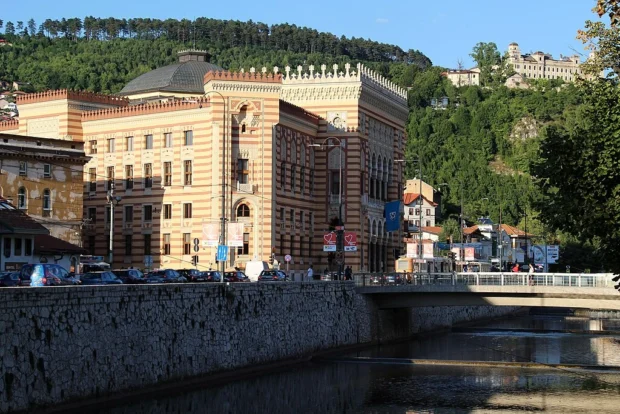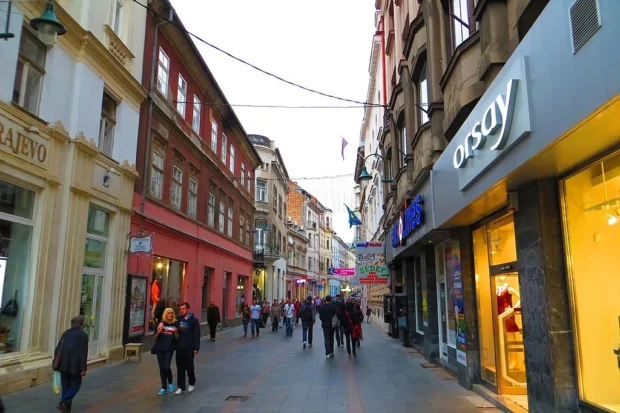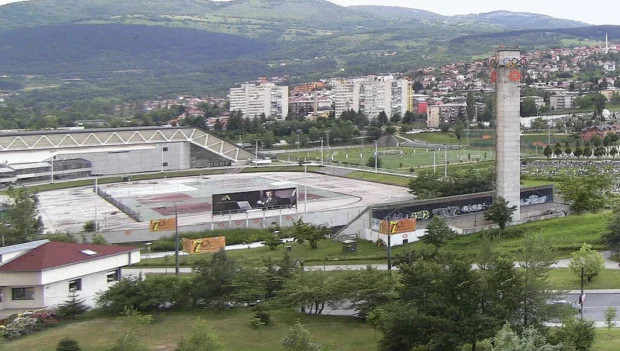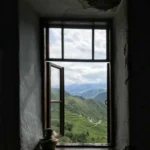Walking through Sarajevo, you feel the city’s stories wrapped around every corner. This place is a living poem of many cultures, ages, and faiths. Bosnia and Herzegovina’s capital shows us how history and everyday life mix in special ways. From Ottoman buildings to Austro-Hungarian squares, and the whispers of old markets, Sarajevo invites everyone to look closer. Whether you come for a few days or longer, the city offers moments that stay with you. Let’s take a slow, warm journey into Sarajevo’s soul.
Table of Contents
Historic Landmarks That Tell Sarajevo’s Story
One of the first places to visit is Baščaršija, the old bazaar area. Walking its cobbled streets, you find shops selling copper crafts, handmade scarves, and small cafés brewing strong Bosnian coffee. The clock tower here is a local treasure, built in the Ottoman style, and still shows lunar time-a fascinating detail many miss. Nearby, Sebilj fountain stands as a famous meeting point. People say if you drink water from it, you’ll return to Sarajevo someday.
For a change of pace in another charming European city rich with historic streets and warm cafe culture, take a closer look at Stockholm’s unique blend of water and history.

Another must-see is the Latin Bridge. This small stone bridge over the Miljacka River is famous worldwide-on it, the spark for World War I was ignited with the Archduke Franz Ferdinand’s assassination in 1914. Standing by the bridge, you can almost hear the echoes of history, though the view now is peaceful and calm.
Don’t forget the Gazi Husrev-beg Mosque, a fine example of Ottoman architecture. Its dome and courtyard invite visitors to pause and feel the city’s spiritual rhythm. Inside, the call to prayer is gentle, reminding everyone of Sarajevo’s Muslim heritage that balances with Orthodox and Catholic traditions nearby.

Old and New in Sarajevo’s Neighborhoods
Beyond the historic center, Sarajevo’s neighborhoods show daily life in charming ways. The district of Marijin Dvor has wide streets and modern shops, contrasting the ottoman feel of Baščaršija. Here, you see a city trying to heal and grow after past troubles but holding on to its spirit. Walking through Ferhadija Street, a busy pedestrian area, feels lively. Many locals stop for ćevapi, small grilled meat sausages served in soft flatbread, a favorite food across Bosnia.
For a quieter moment, visit Vrelo Bosne, a natural park at the source of the Bosna River. It’s a refreshing break from city noise, with large trees, horse carriages, and clear blue water. Locals come here on weekends for picnics and to enjoy fresh air. It’s a good spot to see how Sarajevo’s nature and culture meet.
After enjoying Sarajevo’s rich heritage, you might like to visit Sofia’s historic sites that blend ancient ruins with lively city life.
After soaking in Sarajevo’s unique charm, discover the serene beauty and history of Istanbul’s Blue Mosque that shares Ottoman roots and spiritual calm.

Tasting Sarajevo: Where Food Brings People Together
Food in Sarajevo is more than just eating; it’s about sharing and tradition. In Baščaršija, small eateries offer dishes passed down through generations. Try burek, a pastry filled with meat or cheese, warm and crispy. It’s common to eat with yogurt, a simple but perfect combination. Another classic is sarma, cabbage leaves wrapped around spiced meat and rice, slowly cooked until tender.
When you eat in Sarajevo, expect warm welcomes and sometimes invitations to join family meals. People here say, “Dobrodošli” to greet guests-it means “Welcome.” It is polite to say “Hvala” (thank you) when someone helps or serves you. This small word shows respect and gratitude.

Getting Around the City: Simple and Local
Sarajevo is easy to explore on foot, especially in the old town. For longer trips or to reach neighborhoods beyond the center, the tram system is handy and clean. The trams connect major points like the airport, central station, and main markets, making travel smooth without the need for private cars. Buying a day pass is a smart idea if you want to travel more without thinking about tickets each time.
From the airport, you can take a direct bus to the city center. It’s comfortable and affordable, helping you save money and start your visit relaxed. Many locals use these buses daily, so you get a real sense of the city’s rhythm.

Respectful Customs and Warm Hospitality
When visiting Sarajevo, it’s good to know some local manners. People appreciate it when visitors greet with a smile and polite words. In religious sites, dress modestly-cover shoulders and knees-as a sign of respect. If invited to a home, bringing a small gift like sweets or flowers is a nice gesture.
One surprising custom is the tradition of coffee drinking. Making and offering Bosnian coffee is a ritual of friendship. It takes time, but is a way to show care and build connections. So don’t rush; enjoy the moment and the conversation.

Hidden Corners and Stories Most Visitors Miss
While many rush to famous places, try walking toward the Sarajevo Tunnel Museum. This tunnel was secretly built during the siege in the 1990s, allowing people and food in when the city was surrounded. Standing inside the narrow passage gives a touching sense of resilience and hope.
Also, take time to visit the Art Gallery of Bosnia and Herzegovina. It holds works reflecting the country’s complex past and its artistic spirit. The mix of traditional and modern art shows how Sarajevo keeps its culture alive and changing.

Local Words to Remember
- “Zdravo” – Hello (used informally with friends)
- “Molim” – Please / You’re welcome (very useful word!)
- “Izvinite” – Excuse me / Sorry (good for polite requests)
- “Vidimo se” – See you (friendly way to say goodbye)
Learning even a few phrases shows respect and opens hearts. Sarajevo’s people are friendly and often happy to help travelers try their language.
Staying in Sarajevo: Comfort Meets Character
The best places to stay are near the city center or close to Baščaršija. These areas put you close to main sights, cafés, and markets. You’ll find guesthouses and small inns with local owners who share stories and tips. Staying in these places feels like joining a community rather than just being a visitor.

If you want a quieter stay, neighborhoods on the hills around Sarajevo offer peaceful views over the city and mountains. It’s a nice way to end busy days with a calm scene of rooftops and church bells at sunset.
Final Thoughts on Sarajevo’s Living Tapestry
Sarajevo surprises with its mixture of East and West, old and new, hardship and hope. It is a city where every corner tells a story worth listening to. The warm people, the aromatic coffee, the old bazaars, and quiet river banks create a place that feels like a friend’s welcome. Walking, talking, and simply sitting in Sarajevo teaches us about strength, kindness, and the beauty woven into daily life here.

For anyone curious about a city that keeps its soul in every brick, Sarajevo offers not only sights but moments that touch the heart. So take your time, say “Dobrodošli,” and enjoy the gentle rhythm of this unforgettable city.

Eastern Europe travel specialist uncovering hidden gems from the Baltics to the Balkans.
- Sarajevo City Panorama by Julian Nyča on Wikimedia Commons – cc by-sa 4.0
- Baščaršija, Sarajevo 71000, Bosnia and Herzegovina – panoramio (1) by Michal Gorski on Wikimedia Commons – cc by-sa 3.0
- Latin Bridge 02 (22757259615) by sundeviljeff on Wikimedia Commons – cc by 2.0
- Gazi Husrev-beg Mosque – panoramio – lienyuan lee by lienyuan lee on Wikimedia Commons – cc by 3.0
- Exterior house – Sarajevo Tunnel Museum by Fanny Schertzer on Wikimedia Commons – cc by-sa 3.0
- Sarajevo-Sebilj-fountain by Tumi-1983 on Wikimedia Commons – cc0
- Sarajevo – Gradska Vijećnica (49100427911) by Fred Romero from Paris, France on Wikimedia Commons – cc by 2.0
- Ferhadija – panoramio (1) by Mister No on Wikimedia Commons – cc by 3.0
- Sarajevo-Cathedral by acediscovery on Wikimedia Commons – cc by 4.0
- Sarajevo sa Koševskog Brda in 2010 (Zetra – cropped) by BiHVolim on Wikimedia Commons – cc by-sa 4.0
